Although 3D scanners have been used in law enforcement for more than 10 years, there hasn’t been a widespread adoption due to high cost, complexity, and technical limitations. Fortunately today most of these limitations are a thing of the past. This technology has been growing incredibly fast in just the past few years, changing forensic workflows worldwide.
From documenting a crime scene to recording damage from a car crash, and even virtual alternatives to traditional autopsies, the accuracy of 3D scanners holds up in court (in many jurisdictions). Plus, research shows that the benefits in terms of quickly restoring a scene back to use (especially in traffic) and accuracy of measurements far outweigh the costs, which are coming down.
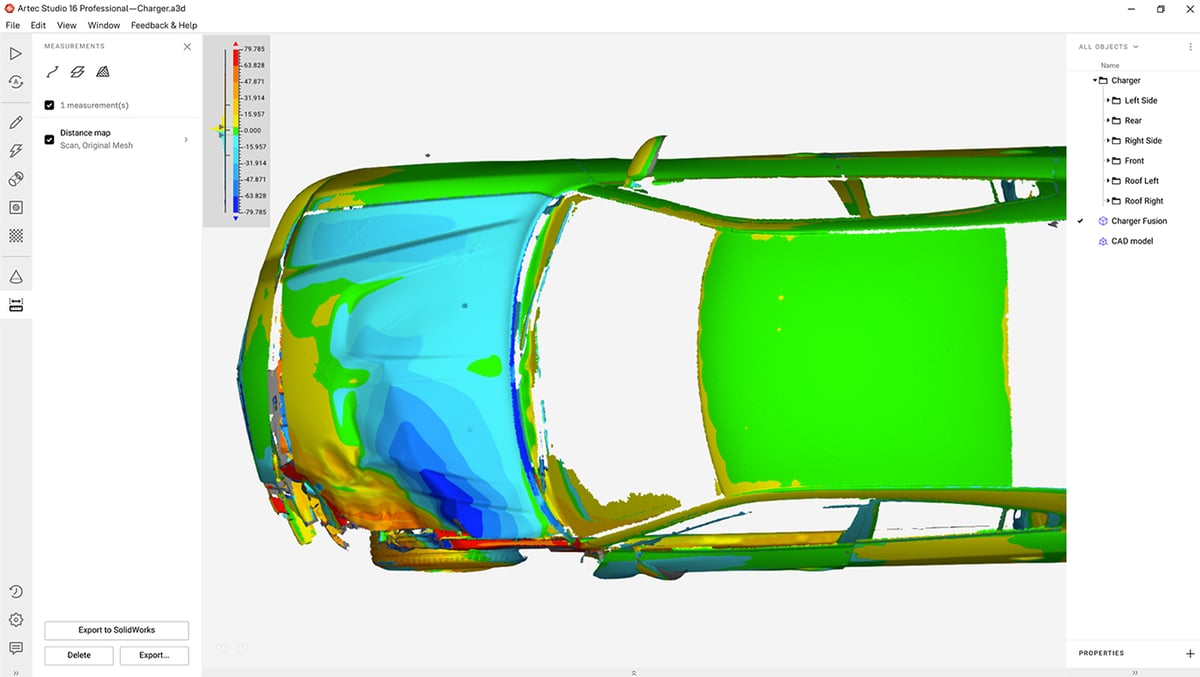
In fact, 3D scanning will likely become a standard law enforcement practice in the not too distant future as product options grow, prices make them more accessible, and the robust data enables better investigation outcomes. Let’s explore the reasons behind the growth of 3D scanners in law enforcement and the models becoming more popular in the field today.
Uses of 3D scanners in law enforcement:
- Crime scene documentation and reconstruction
- Crash reconstruction
- Collecting and digitizing evidence
- Bloodstain pattern analysis
- Running simulations for various crime scenarios
- Bullet trajectory analysis
- Creating virtual crime scenes for courtroom presentations
- Forensic anthropology & odontology
- Virtual autopsies
- Arson investigation
3D Scanners at the Crime Scene
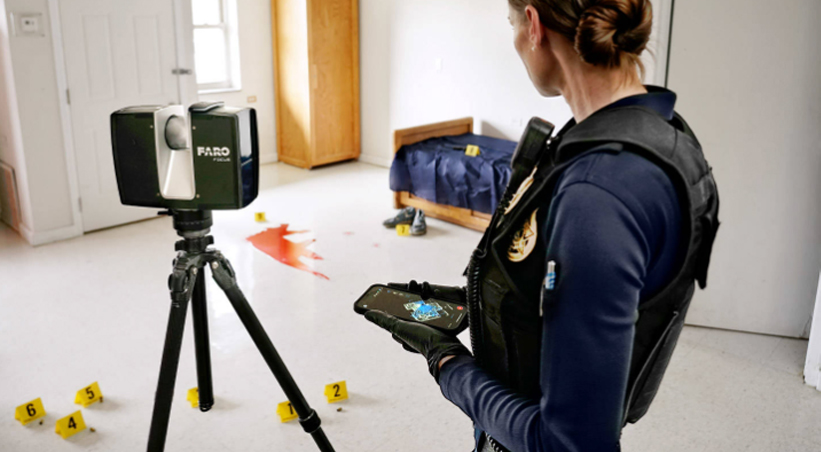
Before getting into 3D scanners themselves, let’s understand the needs of law enforcement officials and how investigators work.
First of all, truth is built upon fact, and fact is supported by evidence. An investigator’s fundamental task is to build and reconstruct crime scenes. From all the evidence within the scene, experts come up with various scenarios that would lead to a narrative. Of course, this story must be data-based since it must break through legal and public scrutiny before bringing justice to the table. Imagine all the context both judges and juries might need to provide a truthful verdict.
Unfortunately, the documentation of crime scenes is a painstaking process. Once investigators arrive at the scene, there’s a lot to swallow. First, the evidence can be completely unpredictable since all evidence is not created equally. Despite that, diagrams supported by various measurements are essential as the scene is documented. Traditionally, investigators used tools, such as paper sketchbooks, measuring tape or rulers, laser range finders, and photography, that was time consuming and often lacked accuracy and consistency. They may measure the length of a piece of evidence, but not how far away it was from another piece of evidence. 3D scans collect bloodstain patterns, bullet holes, tool marks, shoe prints, and details that could prove critical later on in the investigation.
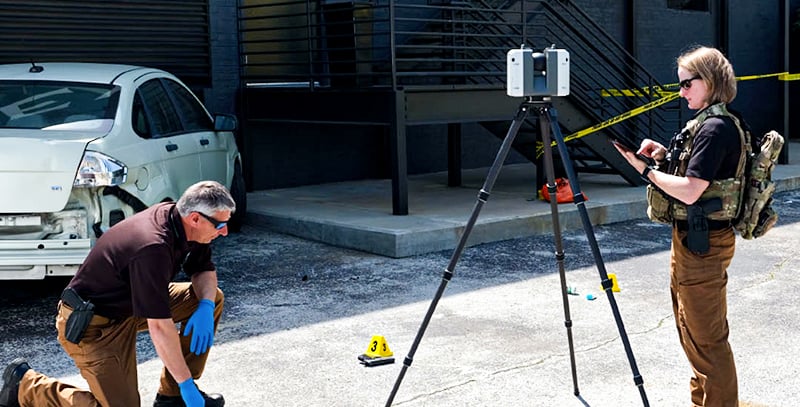
In contrast, 3D scanning captures all the measurements in a room and all the objects, plus photo-realistic colors, textures, and geometry. The technology an objective collector of data since it makes no distinction between what should be collected or disregarded. It’s is far more accurate, data rich, and faster, enabling investigators to explore the scene reconstructed digitally well after the actual scene is cleaned up.
By capturing large amounts of data quickly, 3D scanners enable investigators to create a complete 360-degree image of a scene in minutes. Besides enabling investigators to clear a scene faster, this is also valuable if new evidence emerges or suspects change their narratives.
Among the many technologies the forensics sector has adopted in the past few years, such as UAVs (drones), optical surveying instruments, and GNSS systems, 3D scanners offer a complete paradigm shift regarding documentation, visualization, and analysis.
A 3D scanner enables the user to create, from a real object, a virtual replica, not just measurement, with no risk of contaminating or damaging the scene. The result is a more comprehensive investigation rather than relying on photographic imagery alone.
Using 3D Scanners in Law Enforcement
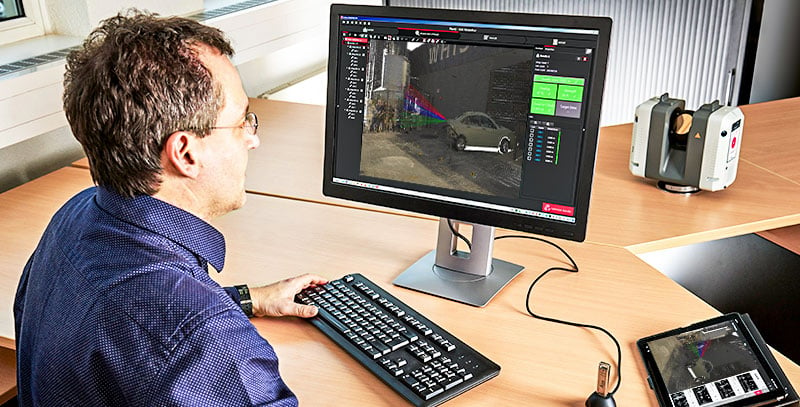
There are many types of 3D scanning technologies, laser scanners and structured light scanners are the most commonly used in investigations.
Laser scanners are a non-contact device that captures millions of discrete data points to measure an object or space using laser infrared light to produce a detailed 3D image in minutes. These images, known as a point cloud, are recorded by the laser scanner as it emits a beam of infrared laser light onto a rotating mirror that effectively baths the surrounding environment with light to capture more than 1 million points per second. The scanner head rotates (or moved manually when using a handheld scanner) sweeping the laser across the object or area.
Objects reflect the beam back to the scanner which records precise distance measurements on both the horizontal and vertical planes, as well as color.
Laser scanners are often mounted on robots, drones, terrestrial vehicles, and aerial vehicles. Though they are becoming faster and smaller (more portable and handheld), laser scanners work best from a stationary tripod for most applications.
Now, what do we do with the data at hand? The digital twin? Well, you can open it on your computer to make all the measurements and observations you need limitlessly.
How to Document a Crime Scene
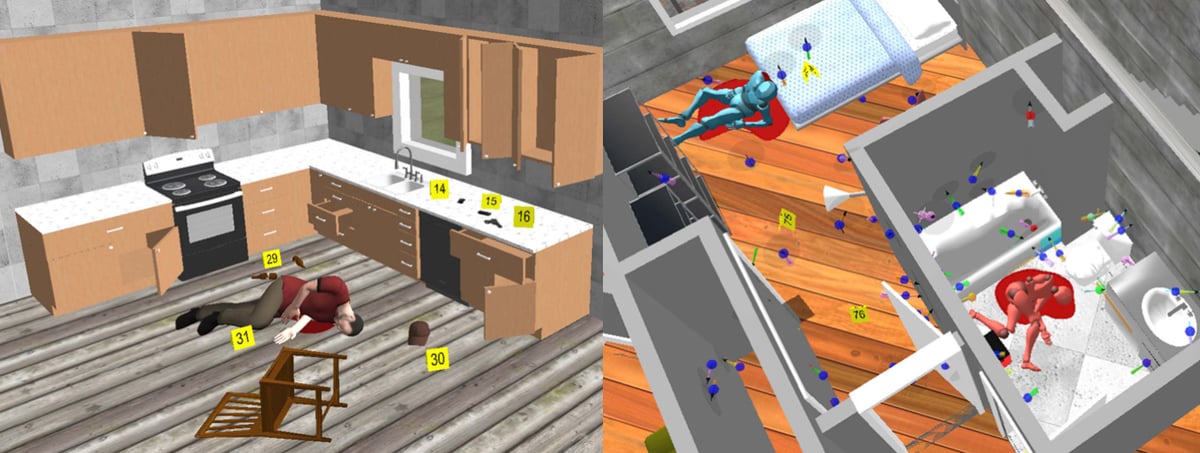
Once agents arrive at the crime scene, they commonly do a complete registration of the area with laser scanners. Since many scans must be stitched together, how do they make sure they’ll get an optimal result? Thankfully, ease-of-use features like previsualization on a tablet as registration takes place are increasingly being implemented. Investigators can review the 3D data as it’s collected before leaving the scene.
After scanning the whole area, you can do complementary scans with a handheld structured light scanners to capture more detail, from the victim’s body or relevant pieces of evidence.
Visualization
Diagrams are critical for any effective case presentation, and indeed, there is no better way to prepare a truthful diagram than using 3D data. The point clouds generated by 3D laser scans become walkthrough visualizations of the whole scene, giving the jury a thorough view of the crime scene.
3D scanning assigns a coordinate to any object the laser hits, for instance, blood splatter and bullet holes. By analyzing the different intensities within the point clouds, investigators can get great insight, especially if they also register colors. Objects with different reflectivity are revealed, such as footprints that might otherwise go unnoticed in standard black and white imagery.
Furthermore, analysts can also add a chemical substance, luminol, to make blood stains and other substances more visible. Since there is a whole science around blood splatter patterns, being capable of viewing multiple points and intensities is vital.
Now, we haven’t talked about 3D printing yet. Does it have use in forensics? Of course, it does! Analysts can print a palpable representation of the evidence for further visualization at court presentations and during the investigation.
Measurements
Traditionally, an inspection process consisted of analogical measurement and analysis. But today, having a 3D scanner is the best option. Reliable 3D data allows the investigator to analyze the scene from multiple viewpoints and set interrelationships between pieces of evidence. Virtual tools can take various measurements such as distances, angles, and elevations, from the 3D replica as accurate as their physical counterparts.
For instance, measuring a scene where gunshots were involved can help analysts assess bullet paths and, ultimately, define the position where the shooter was standing. To measure deep bullet holes in a wall, agents can put a trajectory rod to help the scan capture data such as depth and orientation.
Simulations
Investigators need to recreate different scenarios of how the crime might have happened. Traditionally it would be by sheer imaginative exercises and storyboards. Today, just like it happens with any other 3D environment, computerized simulations are a valuable asset in crime investigation. By integrating different 3D assets, you can recreate a complete movie of the events.
Tools like VR equipment can help you be literally there, while AI algorithms can speed the process of matching all the dots. What can analysts do once they are immersed in the scene? Countless possibilities open up. For instance, you can match the injuries on the victim with a 3D replica of a hypothetical weapon.
“Virtopsies”
As the name suggests, a “virtopsy” is a virtual alternative to traditional autopsies. Law enforcement agents are now using computed tomography (CT) scans to analyze victims’ bodies. A CT scanner is handy for fast and accurate internal representations of injuries, bullets, and other projectiles without proceeding with dissection. Additionally, autopsy analysts can use a structured light scanner for surface registration as a complementary measurement.
Is It Worth It? Cost vs Benefit Analysis

3D scanners are, undoubtedly, potent tools. However, they can be prohibitively expensive for many smaller law enforcement departments, within a range of $5,000 to $100,000, so, how do we assess if the benefits are worths the costs?
One research publication; “A cost-benefit analysis of 3D scanning technology for crime scene investigation,” by Ross Tredinnick, Simon Smith, and Kevin Ponto, looked at whether or not a particular unit, under its unique context, should invest in laser scanner equipment and how much is the optimal spending. To answer these questions, they developed a formal cost-benefit analysis algorithm for 3D scanning technology adoption.
With the help of a focus group of crime scene investigators, they defined key variables to consider.
In terms of costs:
- Initial cost of scanning equipment
- Initial cost of technology infrastructure
- Annual cost of technology infrastructure
- Training cost
In terms of benefits:
- Avoided time cost
- Reduced traffic delay
- Availability of additional information
To account for geographic differences of particular variables, the team implemented the cost-benefit algorithm within an interactive online web application. This application enables agencies to generate customized cost-benefit analyses based on their location within a given period.
After testing the algorithm in many scenarios, they noticed that the net benefit is highly, not surprisingly, dependable on the number of crimes in a specific area. To illustrate this, they point out that the net benefit in a Montana scenario that had a median net benefit of $13,809, while the net benefit in the California scenario totaled $799,541.
Thankfully, 3D scanning has been developing fast in the latest years. For example, companies are developing compact, affordable and easy to use scanners, such as the Leica BLK360, which has similar performances to bulkier and more expensive FARO models from 10 years ago.
“In the past, we would have to bring the actual car to the courthouse and take the jury out to see it, which is an expensive operation with no guarantee the court will even allow it. With the data we generate from our (Artec) Leo, now we can bring the car to the courtroom and let the jurors walk around it virtually.” — Jarrod Carter, Ph.D, forensic accident reconstruction expert. (Read full case study.)
Defining Requirements
We can start by establishing a clear idea regarding the agency’s needs by taking some key considerations:
- Hardware capabilities (RAM, storage, GPU)
- Is the system user-friendly?
- Will there be adverse weather conditions?
- How fast do you need to scan
- And most importantly, how much accuracy do I need?
Knowing what accuracy you really have is essential when it comes to forensics. Analysts must be highly aware that the resolution they may need for a scan to be a piece of evidence may not be possible with some of the less expensive units. So, how do you define if the performance of a laser scanner is enough? Unfortunately, this is not the kind of topic with a clear answer. The following are some key specs that might help you get a better notion regarding performance:
- Range: The maximum distance the scanner can measure
- Ranging error: Is a systematic error that the scanner will always have regarding distances
- Angular accuracy: The capacity the scanner has to measure the actual inclination of the laser beam. This spec depends on the quality of the scanner’s encoders.
- Range noise: How accurate the laser measures a surface, or, in more technical terms, the mean standard deviation from the objective’s surface. It is dependent on the measurement speed, distance and the reflexivity of the object (White surfaces are less noisy than darker ones, the same happens when you compare coarse with shiny surfaces)
These and many more left-out factors contribute to the overall scanner performance and user experience. Although a specs sheet is a valuable tool, it might not be enough to provide a complete answer. So, in the end, testing and comparing different scanners might be the best practice in your selection process.
Crime Scene 3D Scanners
Artec3D
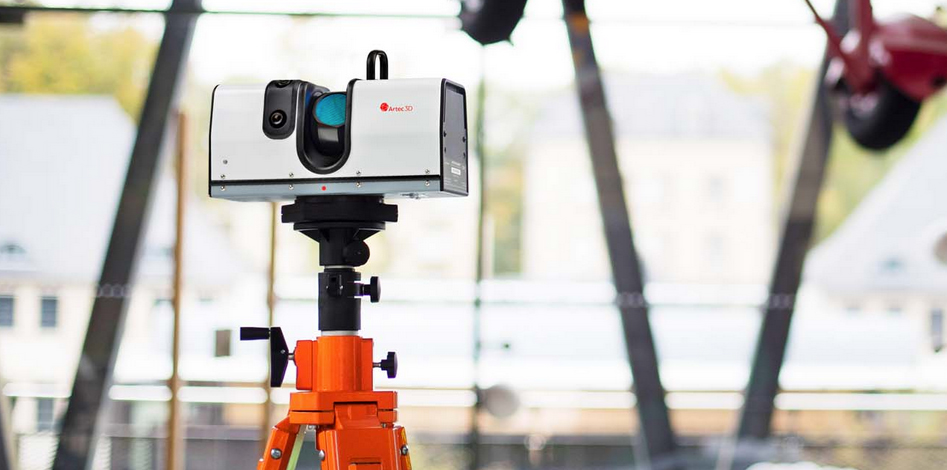
Artec3D offers large-scene 3D scanners and small, more detail-focused scanners, along with software for a range of law enforcement and forensics applications.
Boasting 0.01 mm maximum accuracy, Artec3D says its scanning solutions help forensics teams reconstruct scenes precisely and build stronger cases.
The Artec Leo, Artec Eva, and Artec Space Spider are hand-held structured-light 3D scanners, while the Artec Ray is a long-range laser 3D scanner with an inbuilt battery. By using both a long-range scanner and a handheld one, you can capture, for example, a crash scene and difficult-to-reach areas, such as the interior of a car.
Artec Studio is the company’s software for capturing, processing, and analyzing 3D data featuring an Autopilot or manual mode. Investigators can explore or revisit scan data from captured scenes and evidence or export scans to a third-party application. Data applications include VR court presentations, digital evidence archival, remote collaboration, and more.
FARO
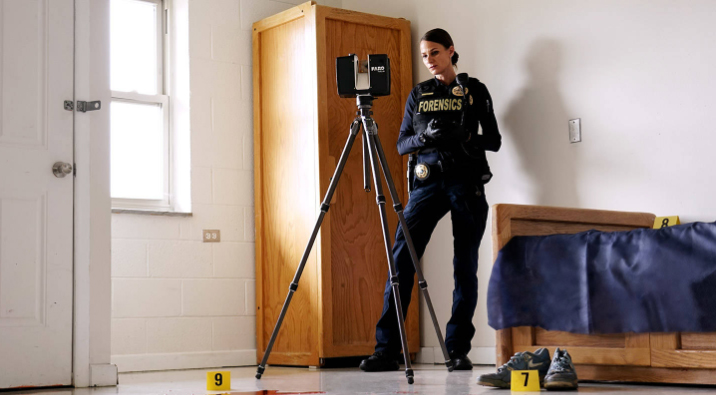
With decades of partnering with law enforcement organizations and forensics, FARO offers a wide range of scanners and software.
FARO’s Focus Laser Scanners capture straightforward and accurate measurements of complex objects, buildings, and scenes, while the company’s Freestyle 2 handheld is for photorealistic 3D reality capture with real-time display. Couple the FARA scanners with the Scene Software and Zone 3D Software to build a cohesive point cloud that can produce stunning visuals with 2D and 3D diagrams, analysis, animations, and videos.
GOM
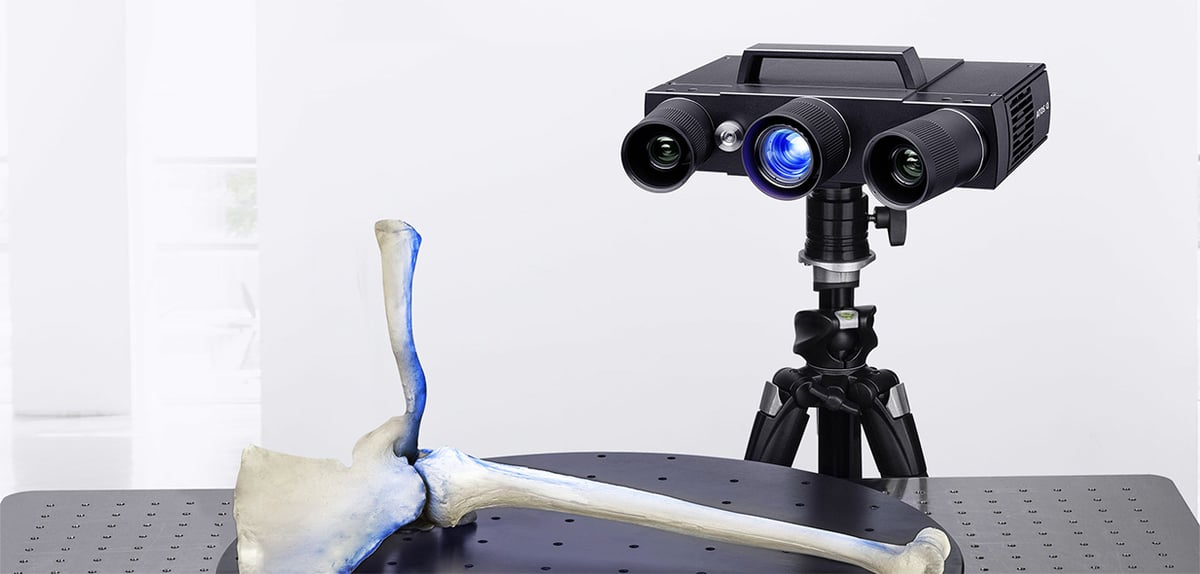
GOM’s ATOS series of non-contact 3D scanners uses structured blue light, not lasers, to deliver precise scans with detailed resolution at high speed. Rather than for large scenes, these scanners are evidence analysis and body scanning.
In addition to the precise 3D image, ATOS also records high-resolution color textures. This way, the technology from GOM can help investigators determine what kind of weapon was used in a crime, how injuries were caused, what shoe matches footprints at the scene, or how specific damage was caused in an accident, the company says.
Leica Geosystems

Leica has a range of scanners for precise crime scene documentation and software to produce court-ready presentations. With the RTC360 3D laser scanner, crime scenes can be captured at up to 2 million points per second in less than two minutes and pre-registered at the scene. With the Double Scan feature enabled on the RTC360, automatically remove moving objects such as people or vehicles in your final point cloud data.
The captured scan data is pre-registered in the field and displayed in real time through Cyclone Field 360 mobile-device app, allowing users to conduct onsite quality control checks of the scans quickly. The company’s Our forensic mapping software, Map360, is the solution for complete crime scene reconstruction with the flexibility to import your data from a wide range of sensors. Analyze your scene with intuitive tools, such as bloodstain pattern analysis, bullet trajectory analysis, 2D and 3D body poser and more. Map360 helps you to easily transform your 3D crime scene data into an accurate and compelling forensic digital twin.
Trimble
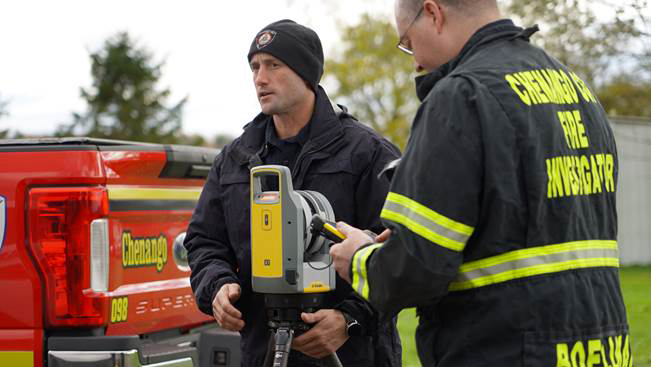
Trimble Forensics is the collection of hardware and software solutions designed specifically for law enforcement and private sector agencies, by technology company Tremble.
The Trimble scene scanner X7 combined with Capture software provides ease of use with intuitive workflows in a compact form making the most challenging scene reachable, the company says. Trimble Forensics Capture software is built to simplify scene evidence gathering and transition date to Trimble forensics Reveal desktop software for in-depth analysis.
Shining3D
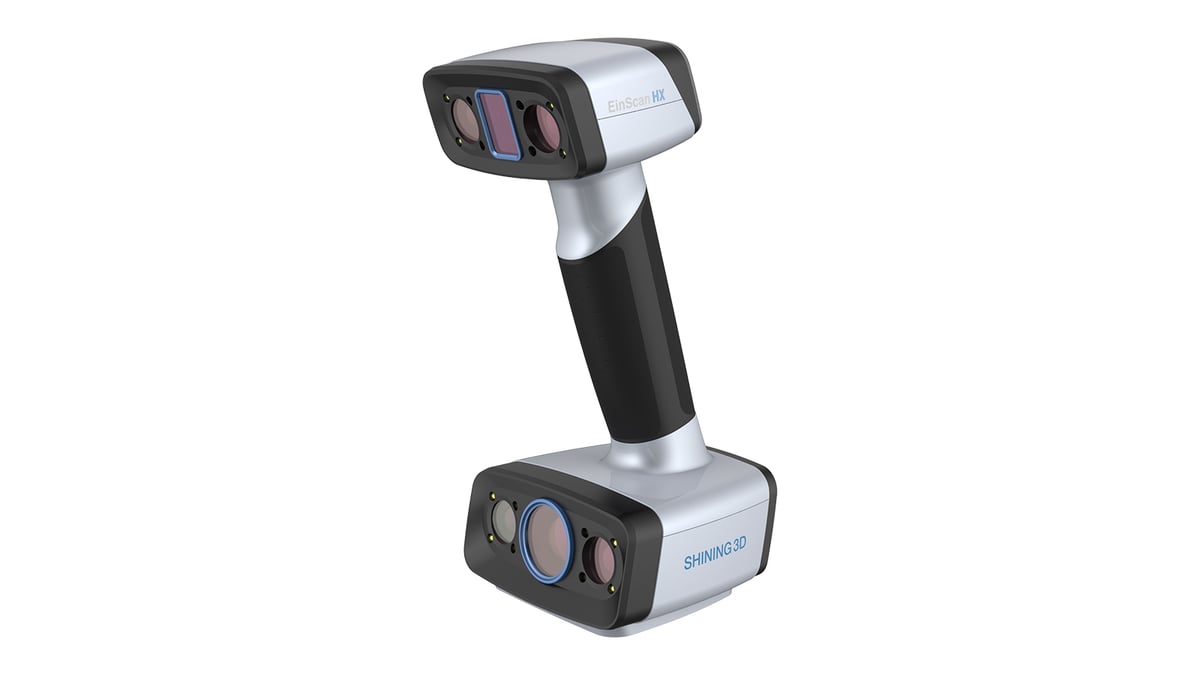
Shining3D offers a range of handheld structured light and laser scanners for forensics details, including evidence, bodies, and faces.
The company’s EinScan HX handheld 3D scanner integrates blue LED light and blue laser into one, which is compatible with a wider range of object sizes (though not full scenes), meeting multiple needs of users.
About the Author: Alejandro Auerbach is a mechanical engineer specializing in additive manufacturing at Solid Print3D, the UK-based reseller of 3D printers, scanners, and software.
License: The text of "The Best 3D Scanners for Law Enforcement" by All3DP Pro is licensed under a Creative Commons Attribution 4.0 International License.